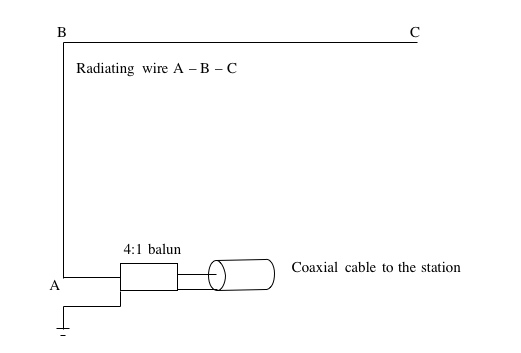Inverted-L antenna: Difference between revisions
Jump to navigation
Jump to search
TheAnarcat (talk | contribs) m (move other pages to see also) |
|||
| Line 1: | Line 1: | ||
==What is it?== | ==What is it?== | ||
| Line 22: | Line 20: | ||
* - a wire length of 121' (37m) will be resonant on 30m, 20m and 17m | * - a wire length of 121' (37m) will be resonant on 30m, 20m and 17m | ||
== See also == | |||
* [[Antenna]] | |||
* [[Propagation]] | |||
* [[Bands]] | |||
External links | == External links== | ||
* [http://vk1od.net/antenna/InvertedL/InvertedL.htm VK1OD Inverted L for HF] | * [http://vk1od.net/antenna/InvertedL/InvertedL.htm VK1OD Inverted L for HF] | ||
* [http://www.clive.wankling.dsl.pipex.com/l.html An inverted L for small gardens] | * [http://www.clive.wankling.dsl.pipex.com/l.html An inverted L for small gardens] | ||
Revision as of 10:33, 7 November 2010
What is it?
The inverted L is, as the name suggests an "upside-down" L.
Notes:
- The total length AC of the wire radiates in this antenna
- A good quality ground is required
- The vertical length AB should be as long as possible for best results
Theory of Operation
End-fed longwire antennas that are 5, 7, 9, 11, 13 or 15 electrical quarter-waves long will exhibit a feedpoint impedance of between 150 ohms and 250ohms. Using a 4:1 balun at the feedpoint will enable us to feed these antennas with a 50 ohm source and cable (usually coaxial cable).
Because the amateur bands are related harmonically it is possible to produce an inverted L antenna that is resonant or almost resonant on a number of bands.
For example:
- - a wire length of 128' (39m) will be resonant on 15m, 12m and 10m
- - a wire length of 121' (37m) will be resonant on 30m, 20m and 17m
